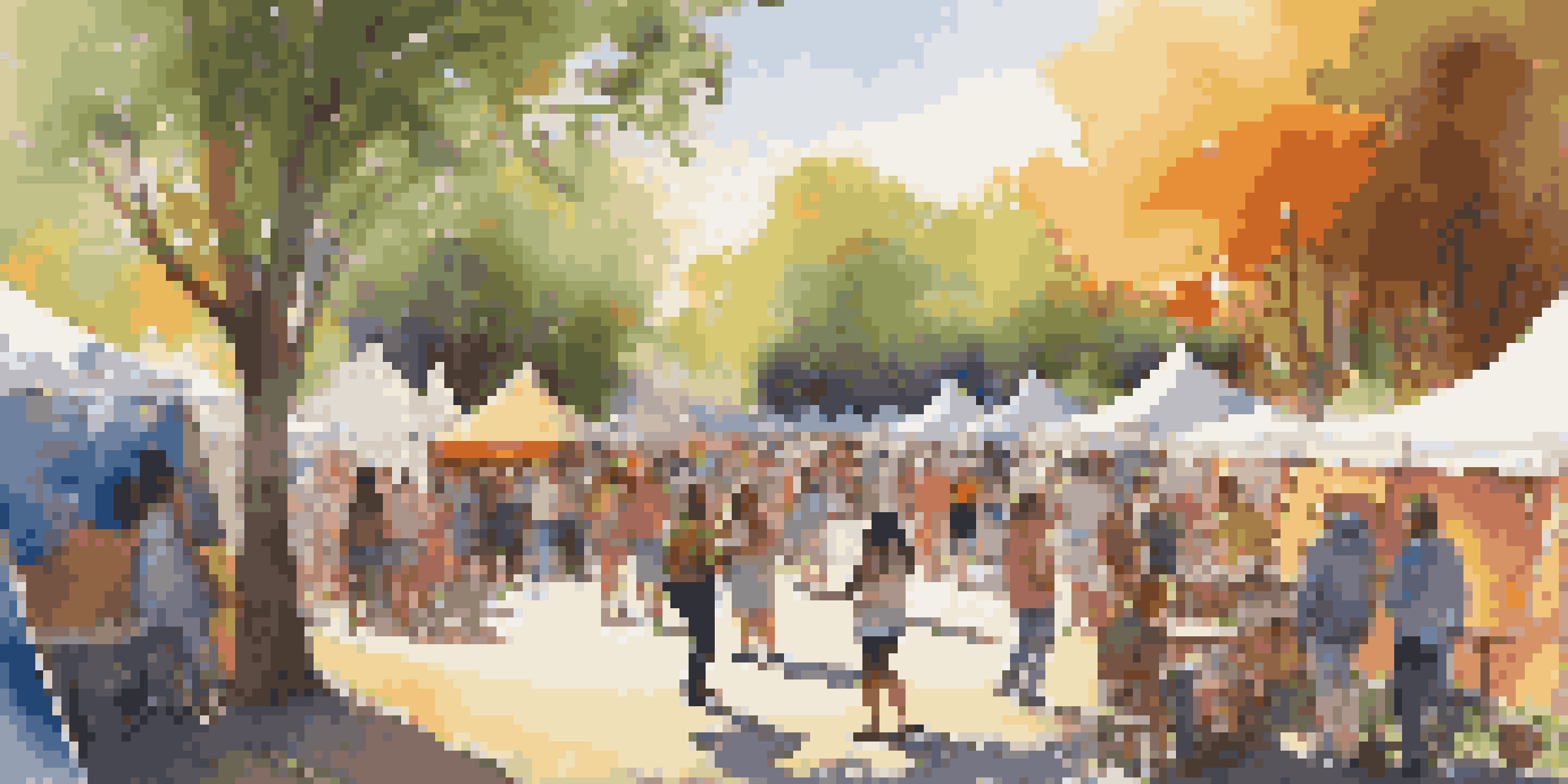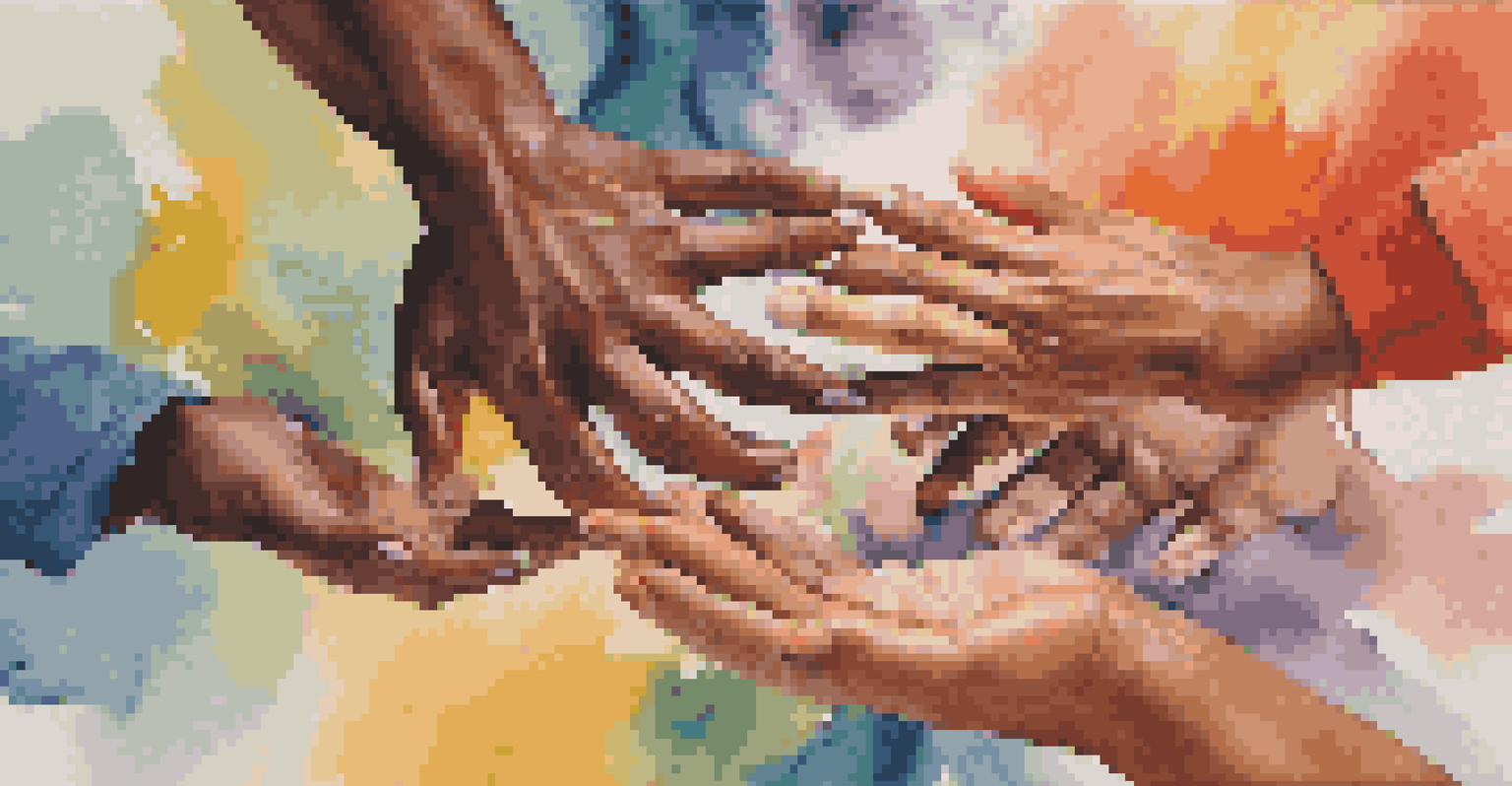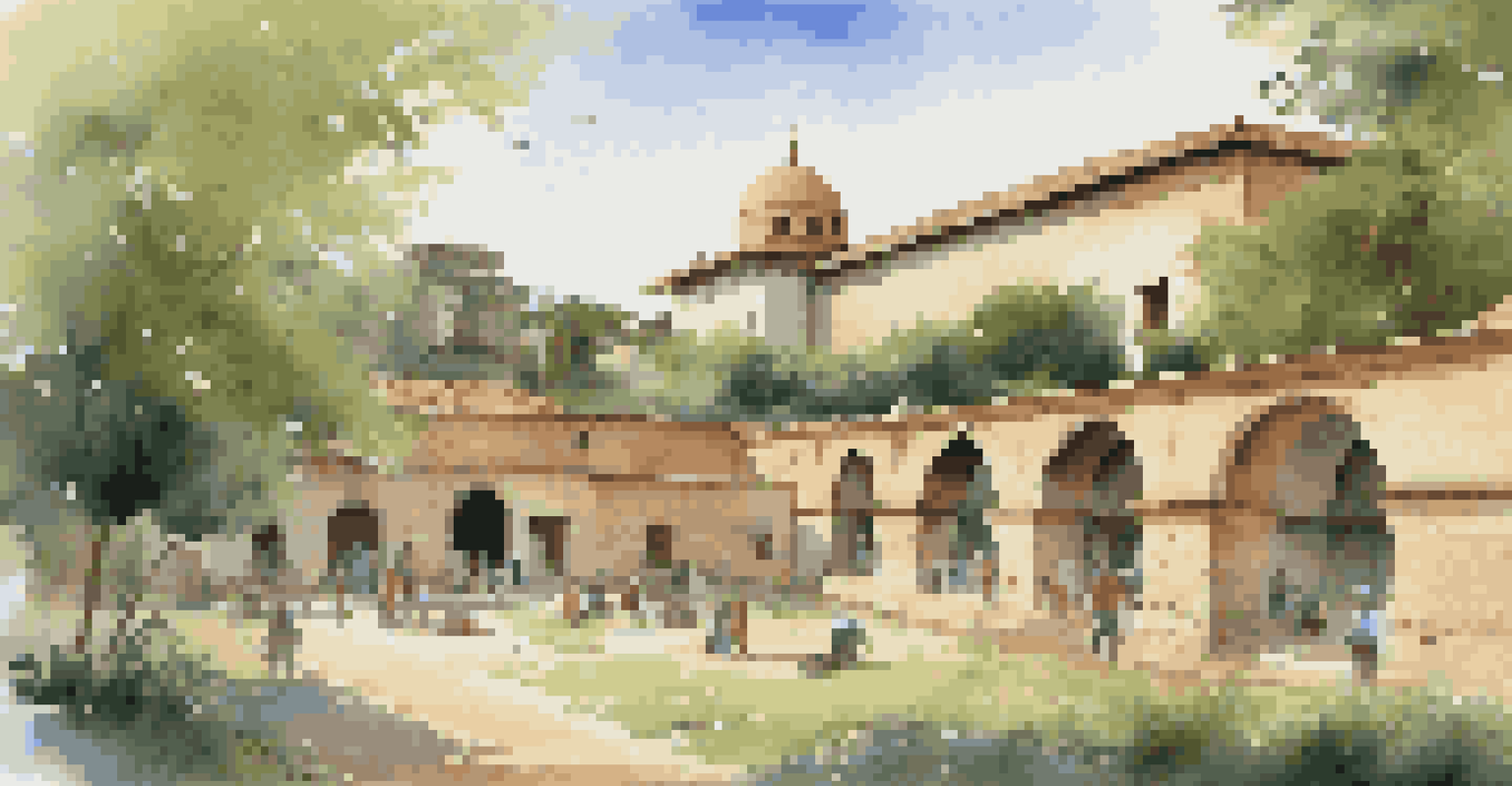Art and Cultural Diplomacy: Bridging Global Heritage Gaps

Understanding Art and Cultural Diplomacy
Art and cultural diplomacy refers to the use of cultural exchanges to foster mutual understanding between countries. It encompasses a variety of activities, such as exhibitions, performances, and collaborative projects, that highlight shared values and heritage. By promoting dialogue through art, nations can bridge gaps and cultivate connections that transcend politics and borders.
Art is a universal language that transcends barriers and unites people around shared experiences.
This approach is not just about showcasing one’s own culture but also about appreciating and respecting others. For instance, when artists from different backgrounds collaborate, they create a dialogue that enriches both parties. This exchange can help dismantle stereotypes and build empathy, essential ingredients for peaceful coexistence.
In today’s globalized world, cultural diplomacy has become a powerful tool for soft power. Countries recognize that their cultural assets can foster goodwill and influence international relations positively. Ultimately, this form of diplomacy promotes not only artistic expression but also a deeper understanding of global heritage.
Historical Context of Cultural Diplomacy
Cultural diplomacy has roots that stretch back centuries, with ancient civilizations recognizing the power of art to convey messages. From the Greek theater to Renaissance art, nations have long used creative expression as a means of communication. These historical endeavors laid the groundwork for modern approaches to cultural diplomacy we see today.

During the Cold War, for instance, art played a crucial role in bridging ideological divides. The U.S. and the Soviet Union utilized cultural exchanges to showcase their respective achievements and values. These initiatives helped to humanize opposing viewpoints and foster understanding during a time of intense rivalry.
Art Bridges Cultural Divides
Art and cultural diplomacy foster mutual understanding and connections between nations through shared creative expression.
Today, we continue to see this historical precedent in action, as countries invest in cultural programs to connect with one another. The lessons learned from the past remind us of the importance of art in fostering dialogue, collaboration, and respect among diverse cultures.
Art's Role in Cultural Exchange
Art serves as a universal language that transcends barriers and unites people around shared experiences. Whether through visual arts, music, or literature, creative expression allows individuals to communicate emotions and ideas without the need for words. This intrinsic quality makes art an ideal medium for cultural exchange.
Cultural diplomacy is about building bridges, not walls.
For example, international art festivals often showcase diverse talents, bringing together artists from various backgrounds. These events create opportunities for collaboration, allowing artists to share their techniques and perspectives. As a result, attendees gain a deeper appreciation for different cultures and their unique contributions to the global landscape.
Moreover, art can be a catalyst for social change, inspiring movements that promote equality and justice. By highlighting issues through artistic expression, creators can engage audiences on critical topics, fostering a sense of global solidarity. This shared commitment to social causes further strengthens the bonds formed through cultural exchange.
Case Studies of Successful Cultural Diplomacy
Several case studies illustrate the effectiveness of cultural diplomacy in bridging global heritage gaps. One notable example is the 'Cultural Heritage in Crisis' initiative, which seeks to protect endangered cultural sites and artifacts in conflict zones. By promoting awareness and collaboration, this program fosters international partnerships that preserve global heritage.
Another example is the 'Sister Cities' program, which pairs cities from different countries to promote cultural exchange and mutual understanding. Through various cultural projects, such as art exhibitions and educational exchanges, these partnerships create lasting bonds that benefit both communities.
Historical Roots of Cultural Exchange
Cultural diplomacy has a long history, dating back to ancient civilizations, and has evolved to play a crucial role in modern international relations.
These case studies showcase the potential of cultural diplomacy to create meaningful connections. By investing in art and cultural initiatives, countries can promote peace, understanding, and appreciation for the rich tapestry of global heritage.
Challenges in Cultural Diplomacy
While art and cultural diplomacy offer numerous benefits, they also face several challenges. One major issue is the commodification of culture, where art becomes a product rather than a means of expression. This shift can lead to misrepresentation and appropriation, undermining the very essence of cultural exchange.
Additionally, there can be political pressures that hinder genuine artistic collaboration. Governments may impose restrictions on artistic expression, limiting the scope of cultural diplomacy. These barriers can prevent artists from fully engaging with their counterparts from other nations, ultimately stifling meaningful dialogue.
Despite these challenges, the potential for art to bridge divides remains strong. By addressing these issues head-on and fostering open communication, stakeholders can work to create a more inclusive environment that supports authentic cultural exchange.
The Future of Art and Cultural Diplomacy
As we look ahead, the role of art and cultural diplomacy in fostering global connections will continue to evolve. With advancements in technology, virtual exchanges are becoming more prevalent, allowing artists from around the world to collaborate despite geographical barriers. This shift opens up new avenues for cultural engagement and understanding.
Moreover, the growing emphasis on inclusivity and representation in the arts will further enrich cultural diplomacy efforts. By amplifying diverse voices and perspectives, we can create a more comprehensive understanding of global heritage that reflects the complexity of our world.
Challenges in Cultural Diplomacy
Despite its benefits, cultural diplomacy faces challenges such as the commodification of art and political restrictions that hinder genuine collaboration.
Ultimately, the future of art and cultural diplomacy lies in its ability to adapt and innovate. By embracing new technologies and prioritizing inclusivity, we can continue to use art as a powerful tool for fostering connections and bridging gaps between cultures.
Conclusion: The Power of Art as a Diplomatic Tool
In conclusion, art and cultural diplomacy play a vital role in bridging global heritage gaps. By fostering dialogue, collaboration, and understanding, art serves as a powerful tool for connecting diverse cultures. The stories of successful cultural exchanges highlight the potential for art to transcend boundaries and promote peace.
As we navigate an increasingly interconnected world, the importance of investing in cultural diplomacy cannot be overstated. By supporting artistic initiatives and promoting cultural exchange, we can cultivate empathy and respect among nations, ultimately contributing to a more peaceful global community.

In the end, it is the shared human experience that unites us all. Through the lens of art, we can celebrate our unique heritages while recognizing the common threads that bind us together, paving the way for a brighter, more connected future.